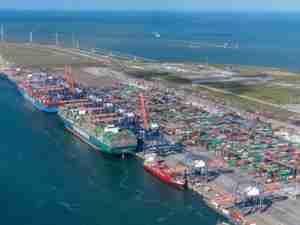January marks a special time for the Panama Canal, though perhaps not for reasons you’d normally expect. The month signals the height of Panama’s coffee harvest season – the source of a growing national industry and increasingly vibrant local economy that’s deeply intertwined with the operation of the waterway. We invite you to learn more about the vital trade in this month’s Canal Connection.

Coffee and the Canal intersect at the waterway’s Environmental Economic Incentives Program (PIEA), which the Canal created to empower local farmers to protect and cultivate more than 21,000 acres of the local watershed, with coffee as a key crop. Protecting the watershed is crucial. For the Canal, water remains a principal resource as it continues serving as a vital artery for global maritime trade. And because the Canal derives its water from the same lake system that provides potable water to Panama, the responsible management of the watershed through PIEA and other projects, like its innovative water savings basins, is imperative.
PIEA helps offer formal land titles for local farmers, so they take greater ownership of the land they farm. Organizers provide education about sustainable farming practices – such as planting trees to provide shade for their coffee plants rather than clearing land through less environmentally-conscious methods like slash-and-burn. Reforestation and sustainable farming efforts lead to greater yields for farmers while ensuring more arable land for future use. In turn, farmers are helping to strengthen the watershed, thereby preventing runoff and better conserving water resources and the environment.
So far, results have been impressive:
- Nearly 16,000 acres of land across nine primary sub-basins have been reforested
- 1,600 acres of forest land have been protected and an additional 5,300,000 seeds planted
- From 2015-2016 alone, 440,925 pounds of coffee were produced
- The region has seen a 175% increase in coffee production
- In total, 126 villages and 1,653 farms benefit from the watershed program
Communities are now invested in preserving the watershed. Thanks to the PIEA program, the Canal is providing economic incentives and sustainable production models that not only help farmers create greater economic opportunity for them and their families, but also ensure the broader sustainability of the watershed, thereby keeping the Canal, and global maritime trade, running smoothly.










